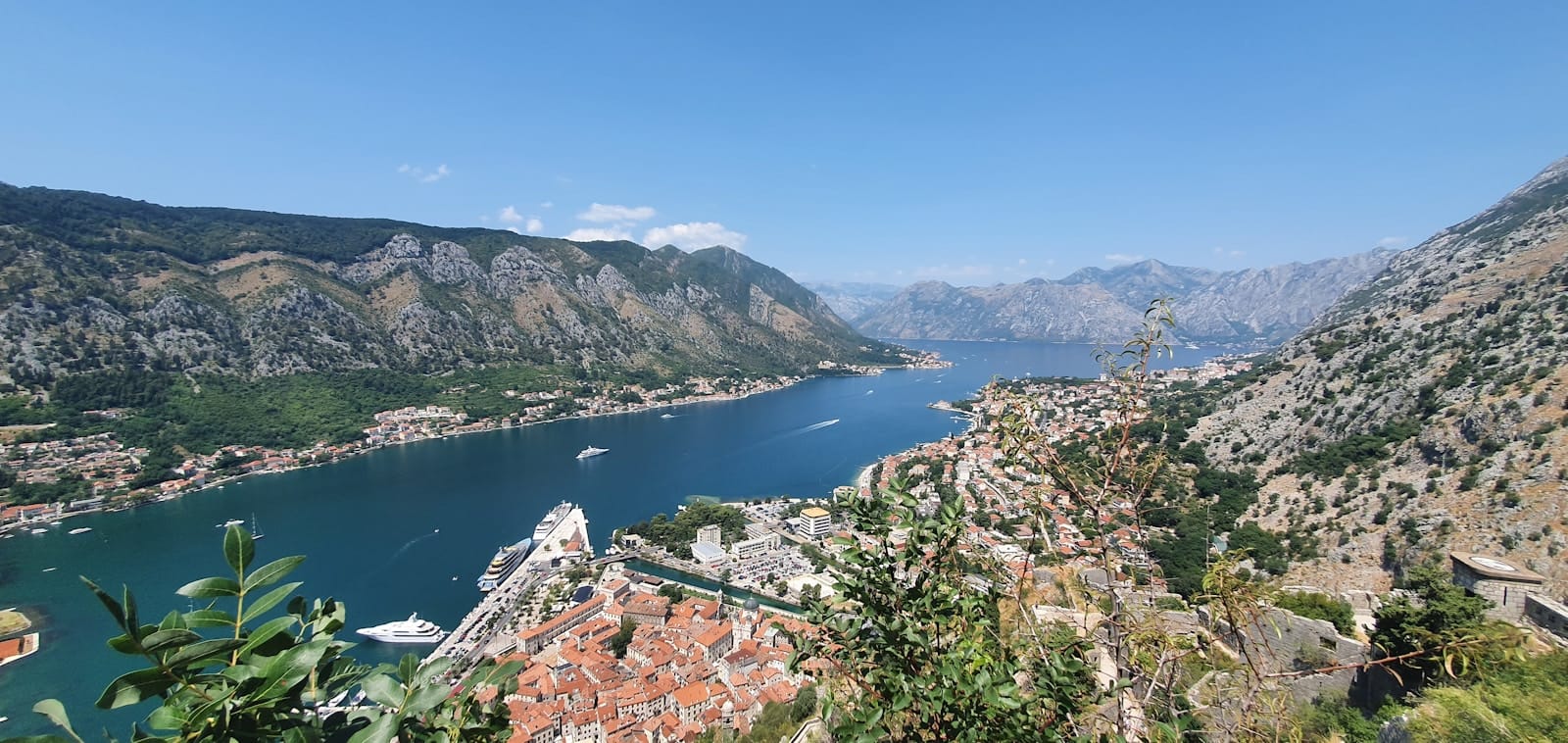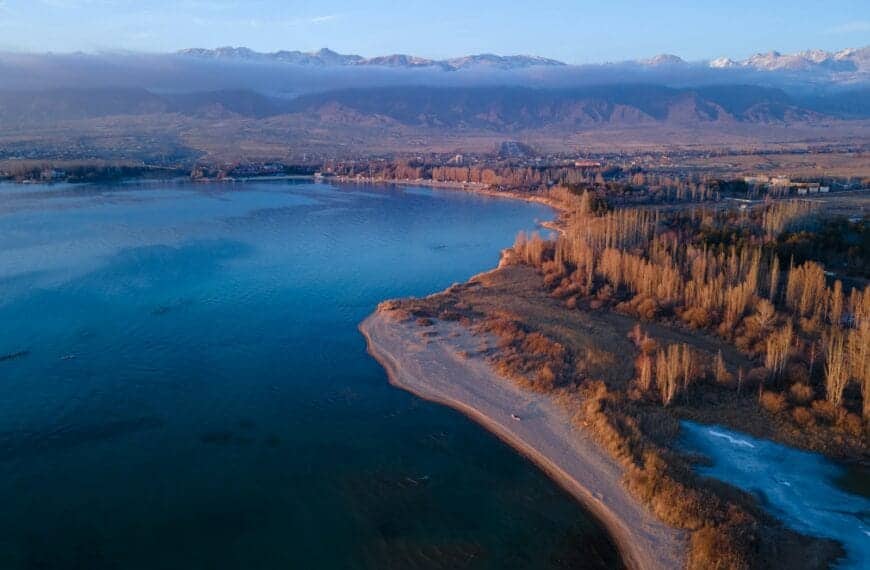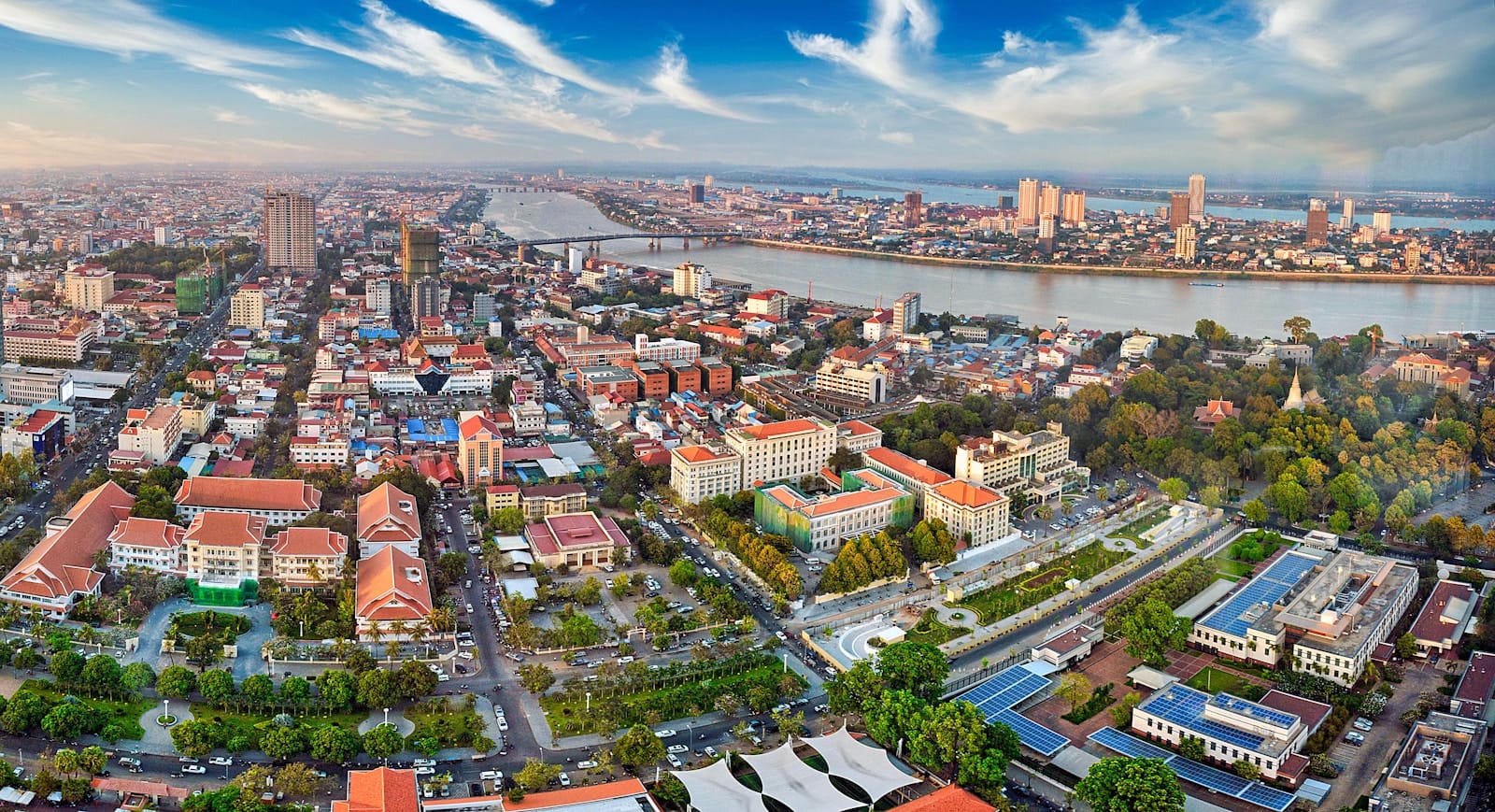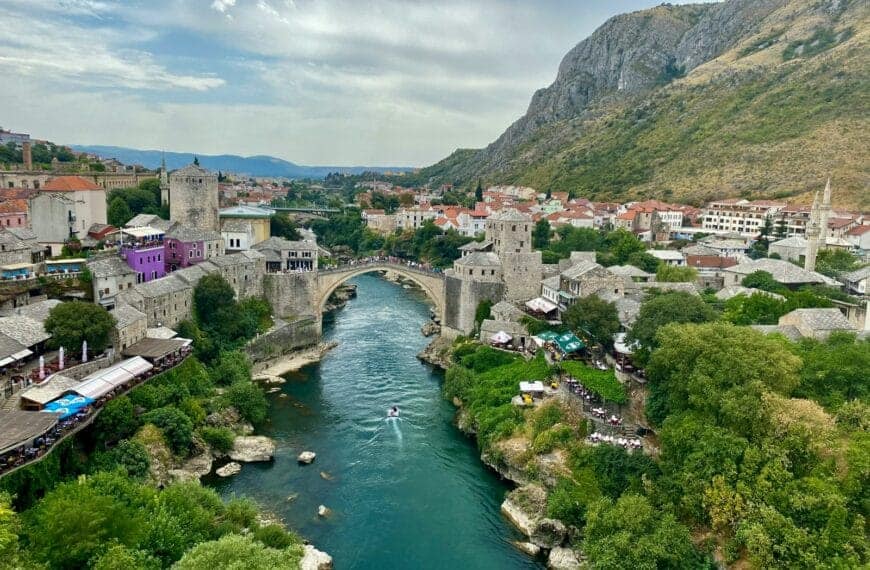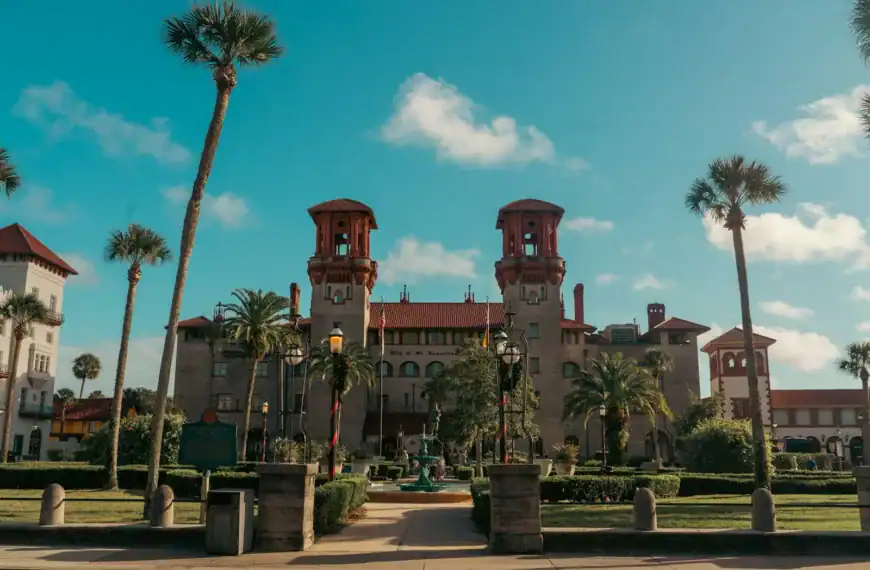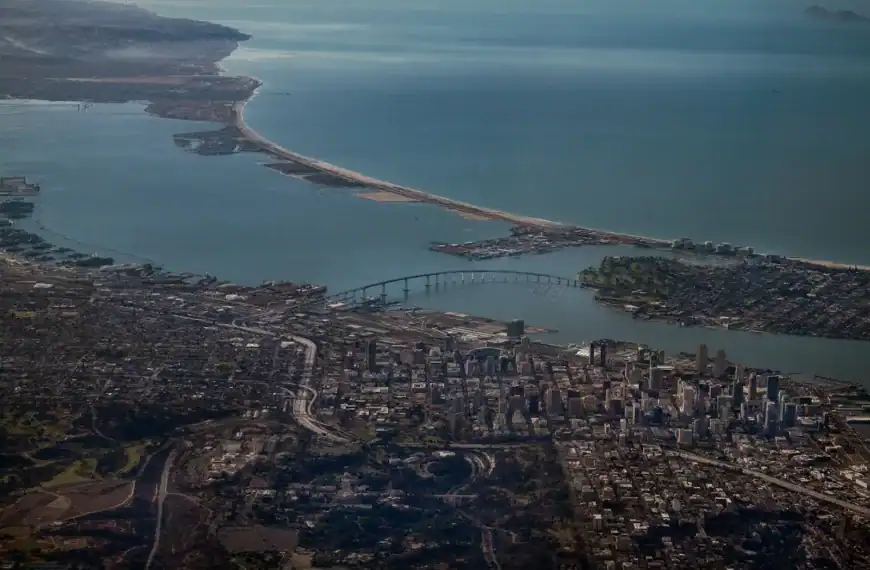Montenegro Travel Guide: Adriatic Charm, Mountain Majesty, and Hidden Balkan Beauty
Intro to Montenegro Travel Guide
Montenegro is a country of dramatic contrasts — where medieval seaside towns meet snow-dusted alpine peaks, and lazy days on the Adriatic shift into whitewater adventures inland. It’s one of Europe’s most underrated treasures, packed with natural splendor, cultural depth, and Old World soul without the tourist overload.
Start planning your journey with our complete Montenegro tour guide — from bay-hugging villages and fjord-like coastlines to highland lakes, canyon hikes, and cultural gems.
Municipalities to Explore in Montenegro
Bar | Berane | Bijelo Polje | Budva | Cetinje | Danilovgrad | Herceg Novi | Kolašin | Kotor | Mojkovac | Nikšić | Petnjica | Plav | Pljevlja | Plužine | Podgorica | Rožaje | Šavnik | Tivat | Ulcinj | Žabljak
💡Quick Facts:
Destination: Montenegro
Continent: Europe
Country: Montenegro
Area: 5,333 mi² (13,812 km²)
Population: ~620,000
Capital: Podgorica
Regions: Coast, Central, Northern Mountains
Official Language: Montenegrin
Regional Languages: Serbian, Bosnian, Albanian, Croatian
Currency: Euro (EUR, €)
Time Zone: Central European Time (CET), UTC +1; Daylight Saving Time observed
Known For: Adriatic coastline, Bay of Kotor (UNESCO), medieval towns, Durmitor National Park, Orthodox monasteries, beaches and mountain landscapes
🛂Arrival Info:
Entry Requirements: Visa-free for EU/Schengen, U.S., UK, Canada, and many other countries (up to 90 days). Some nationalities require a visa.
Visa Information: Applications and entry details available via the Government of Montenegro Ministry of Foreign Affairs official visa page.
Access Points: Multiple land crossings from Croatia, Bosnia & Herzegovina, Serbia, Kosovo, and Albania.
Sea Entry: Ferries operate from Bari (Italy) to Bar; cruise ships dock in Kotor.
Travel Documents: Passport valid at least 3 months beyond stay; proof of onward travel may be requested.
🏥Health Info:
Vaccines: No mandatory vaccines; routine vaccinations recommended.
Healthcare Access: Public hospitals in Podgorica, Bar, and Nikšić; English-speaking doctors available in tourist hubs.
Emergency Care: Basic emergency services available; insurance recommended for mountain activities.
Risks: Tick-borne diseases in rural/mountain areas; carry repellents. Sun exposure high on coast.
🚑 Check travel insurance options for travel emergencies, delays, and medical needs abroad — Get coverage here
💉 Stay Informed with Official Updates: WHO – International Travel & Health | CDC – Travel health updates
🚨Travel Advisory:
Overall Safety: Generally safe with low crime rates; petty theft can occur in tourist areas.
Road Safety: Mountain roads narrow and winding; winter driving requires caution.
Political Stability: Stable; avoid border areas during occasional regional tensions.
Natural Risks: Earthquakes possible; strong currents along some beaches.
🌍Track Real-Time Official Updates: US Travel Advisory | UK Foreign Travel Advice | Government of Canada | NZ SafeTravel
🥳Holidays:
New Year’s Day: January 1–2
Independence Day: May 21
Statehood Day: July 13
Christmas (Orthodox): January 7
Good Friday/Easter Monday: Dates vary
Christmas (Catholic): December 25
💰Visitor Info:
Currency: Euro (EUR, €)
Payments: Credit cards accepted in cities; cash preferred in rural areas.
Average Costs: Budget €40–50/day; mid-range €70–100/day; luxury €150+.
Tipping Customs: 10% in restaurants; rounding up common in taxis.
Tourist Taxes: Daily visitor tax (€1–€2) often added to accommodation bills.
🛫Airports:
Podgorica Airport (TGD) – Main international hub
Location: ~11 km from Podgorica
Airlines: Air Serbia, Turkish Airlines, Ryanair, Austrian, Lufthansa, Wizz Air
Transport: Taxis, car rentals, limited bus service
Tivat Airport (TIV) – Coastal airport near Kotor, Budva
Popular in summer for beach and cruise travelers
Served by seasonal charters and low-cost carriers
🧳 Delayed or canceled flight? Check if you’re eligible for compensation
🚍Transport:
Rail: Belgrade–Bar line offers scenic intercity travel.
Buses: Main form of domestic and regional transport; extensive network.
Driving Laws: Drive on the right; IDP recommended. Winter tires required Nov–Apr in mountains.
Car Rentals: Widely available in major cities and airports.
Ferries: International ferry Bar–Bari (Italy); local ferries across Bay of Kotor.
🚗 Book reliable airport transfers and in-city rides in advance. Reserve your ride here
🛰️Connectivity:
Mobile Networks: Telekom Crne Gore (T-Mobile), Mtel, One.
SIM/eSIM: Tourist SIMs widely available with affordable data.
Wi-Fi Access: Common in hotels, restaurants, and cafes.
Coverage: Strong in cities and coast; weaker in remote mountain areas.
🛜 Stay connected abroad with affordable eSIM data packs. Get your eSIM here
📜Laws & Etiquette:
Drinking Age: 18 for alcohol.
Smoking Laws: Prohibited in enclosed public spaces.
Dress Codes: Casual on coast; modest clothing in monasteries/churches.
LGBTQ+ Safety: Increasingly open, but discretion advised in rural areas.
Cultural Etiquette: Handshakes common; respect for elders valued; avoid political discussions.
👮Emergency Info:
Emergency Number: 112 (general), 122 (police), 123 (fire), 124 (ambulance).
Tourist Assistance: Available at info centers in Podgorica, Budva, and Kotor.
Major Hospitals: Clinical Center of Montenegro in Podgorica; hospitals in Nikšić and Bar.
Consulates: Majority located in Podgorica.
🏛️ Use embassy locator tools: Embassies Worldwide
🌞Weather:
Climate: Mediterranean on coast; continental inland; alpine in north.
Best Season: May–September for coastal travel; December–March for skiing in mountains.
Average Temperatures: 77–86°F (25–30°C) in summer; 32–50°F (0–10°C) in winter.
Rainfall: Heavy autumn/winter rains on the coast; drier summers.
Daylight: Long summer days (up to 15 hours sunlight).
🌦️ Stay prepared—check the weather forecast for your destination — Weather Forecast
Montenegro by Region – Where to Go
Despite its small size, Montenegro is geographically diverse, offering sea, mountains, rivers, and remote villages within hours.
Bay of Kotor (Boka Bay)
Often called Europe’s southernmost fjord, this UNESCO-listed bay is home to Kotor’s Old Town, Perast’s islets, and Herceg Novi’s sea fortresses. Cruise the bay, hike fortress walls, and explore timeless Adriatic towns.
Budva Riviera
Montenegro’s beach playground with medieval walls, nightlife, and sandy stretches. Budva balances beach bars and family-friendly resorts, while Sveti Stefan is home to the iconic islet hotel. Petrovac offers a quieter escape.
Central Montenegro (Podgorica, Cetinje, Lake Skadar)
The heartland features Podgorica, the capital; Cetinje, the old royal town; and Lake Skadar National Park, a birdwatcher’s and kayaker’s paradise. Visit Ostrog Monastery, perched dramatically on a cliff.
Northern Montenegro (Durmitor & Tara Canyon)
The country’s wildest side — glacial lakes, deep canyons, and alpine peaks. Žabljak is the base for Durmitor National Park, Black Lake, and the Tara River, offering rafting, hiking, and winter skiing.
Ulcinj & the Southern Coast
Closer to Albania, this region has a distinct Ottoman flair and boasts Velika Plaža, the longest beach in the Balkans. Ulcinj is known for its old fortress, sandy shores, and multicultural vibe.
Top Places to Visit in Montenegro
These must-see destinations showcase the best places to visit in Montenegro, grouped by travel interest.
Cultural & Historic Towns
- Kotor – UNESCO-listed walled city with churches, cafes, and cats
- Cetinje – Montenegro’s former capital, full of museums and monasteries
- Perast – Baroque beauty with islands and bell towers
- Ulcinj – Ottoman-era architecture and cultural fusion
Beaches & Coastal Escapes
- Budva – Lively mix of beaches, nightlife, and old town strolls
- Sveti Stefan – Picture-perfect islet (hotel access restricted, but visible)
- Petrovac – Smaller beach town with walking trails and family vibes
- Velika Plaža (Ulcinj) – 12 km of soft sand and kite-surfing heaven
Nature & Mountains
- Durmitor National Park – Glacial lakes, hiking peaks, and Tara Canyon views
- Tara River – One of Europe’s deepest canyons, great for rafting and camping
- Lake Skadar – Marshlands, monasteries, and scenic kayaking
- Biogradska Gora – Ancient forest and lake in one of Europe’s last virgin woodlands
How to Choose Where to Go in Montenegro
You can cross the country in just a few hours — but here’s how to build your itinerary around your travel style.
- For Beach Lovers & Seaside Towns:
Base in Budva, Petrovac, or Kotor, with day trips to Sveti Stefan, Tivat, or Herceg Novi. - For Culture & History Buffs:
Explore Kotor, Cetinje, and Ulcinj. Add Njeguši for mountain culture and traditional food. - For Nature & Adventure Travelers:
Head north to Žabljak, Durmitor, and the Tara River. Or explore Lake Skadar and Biogradska Gora. - For Off-the-Beaten-Path Escapes:
Try Plav, Prokletije National Park, or Gusinje for Alpine landscapes and fewer crowds. - For Short Trips & Weekend Escapes:
Stay around Boka Bay — combine Kotor, Perast, and Lovćen National Park in 3–4 days.
How to Get Around Montenegro
Montenegro’s compact size makes travel easy — but mountain roads require patience.
Car Rentals
- Best option for flexibility — especially for mountain parks and hidden villages
- Roads are well-maintained but narrow and winding inland
- International license often required
Public Buses
- Reliable and cheap for major towns (e.g., Kotor to Budva, Podgorica to Žabljak)
- Schedules vary; book at stations or through busticket4.me
- Not ideal for national parks or rural areas
Taxis & Transfers
- Affordable for short trips — negotiate fares or use local ride apps
- Pre-arranged transfers from airports or border crossings available
Trains
- Limited network, but scenic routes from Bar to Podgorica or Belgrade
- Not useful for coastal or mountain areas
Boat Taxis & Ferries
- In summer, water taxis link towns in Boka Bay
- The Kamenari–Lepetane ferry crosses the narrowest bay point
Helpful Apps:
- Moovit – Transit and bus info
- Maps.me – Offline hiking and nature routes
- TaxiGo MNE – Local ride-hailing alternative to Uber
Travel Budget & Costs in Montenegro
Montenegro is affordable compared to Western Europe, especially inland and off-season.
Budget Travelers (€40–70/day)
- Hostels or guesthouses: €15–35
- Local meals: €6–10
- Buses, short taxis, and self-guided hikes or beaches
Mid-Range (€80–150/day)
- Boutique hotels or apartments: €50–100
- Car rental + petrol: ~€40/day
- Guided tours or boat rides, plus national park fees
Luxury (€180–350+/day)
- Seafront villas, fine dining, and private drivers
- Experiences: wine tastings, helicopter rides, glamping lodges
Cost to Travel in Montenegro – Tips to Save
- Eat at konobas (local taverns) for filling, affordable food
- Use public beaches and free national park trails
- Travel in shoulder season (May–June or Sept–Oct) for better rates
- Book intercity buses in advance for discounts
Best Time to Visit Montenegro
Montenegro is a year-round destination depending on your focus — beaches, hiking, or cultural festivals.
Summer (June–August)
- Best time to visit Montenegro for beaches, festivals, and Adriatic sun
- Warm weather (27–35°C), long days, and lively coastal towns
- High season = higher prices and crowded Old Towns like Kotor and Budva
Shoulder Seasons (May–June & September–October)
- Ideal weather for hiking, sightseeing, and lake visits
- Fewer crowds, lower rates, and blooming landscapes
- Swimming still possible in September, with water temps ~23°C
Winter (November–March)
- Best for skiing in Durmitor, Kolašin, and Bjelasica
- Quiet coastal towns; good for budget and off-season photography
- Cold inland but mild on the coast (12–18°C)
Must-See Experiences in Montenegro
From mountain monasteries to coastal cruises, these are the top things to do in Montenegro for all travelers.
Climb Kotor Fortress at Sunrise
The San Giovanni Fortress hike offers sweeping views over Boka Bay — go early to avoid heat and crowds.
Raft the Tara River Canyon
Europe’s deepest canyon delivers adrenaline and surreal views. Multi-day camping trips or single-day rafting tours from Žabljak are available.
Kayak or Boat on Lake Skadar
Explore Montenegro’s largest lake, home to island monasteries, floating villages, and 280+ bird species including pelicans.
Visit Ostrog Monastery
Carved into a sheer cliff, this pilgrimage site draws visitors of all faiths. Accessible as a day trip from Podgorica or Nikšić.
Wander the Old Town of Kotor
Lose yourself in stone alleyways, climb bell towers, and sip espresso in medieval squares — often with cats as companions.
Swim at Queen’s Beach (Milocer)
Tucked beside Sveti Stefan, this exclusive cove is open to the public and perfect for a relaxing dip.
Ride the Kotor–Njeguši–Cetinje Scenic Loop
Drive or cycle up the Ladder of Kotor for hairpin turns and jaw-dropping vistas, then visit the royal town of Cetinje.
Taste Local Wines in Crmnica
Explore small, family-run vineyards near Lake Skadar — try Vranac reds and local rakija (brandy) with a view.
Explore Biogradska Gora National Park
Walk peaceful forest loops around Biogradska Lake, one of Europe’s last primeval forests, and camp beneath the stars.
Book immersive Montenegro tours and experience unforgettable things to do in Montenegro — from sacred temple rituals and highland treks to floating markets and lakeside food adventures.
Best Travel Itineraries in Montenegro
Here are sample routes for short stays and deeper exploration, optimized for scenery and cultural depth.
5-Day Adriatic Discovery
- Day 1: Arrive in Tivat or Podgorica → Kotor Old Town
- Day 2: Bay of Kotor cruise to Perast + Our Lady of the Rocks
- Day 3: Drive to Budva, beach time at Jaz or Mogren
- Day 4: Explore Sveti Stefan + Milocer trail
- Day 5: Return via Lovćen or Cetinje
10-Day Coast to Canyon Adventure
- Days 1–2: Kotor + Perast
- Days 3–4: Budva + Petrovac
- Day 5: Transfer to Lake Skadar (Virpazar), wine tasting + kayaking
- Days 6–7: Durmitor National Park base in Žabljak
- Day 8: Tara Canyon rafting
- Days 9–10: Biogradska Gora → return via Podgorica
14-Day Montenegro Circle
- Bay of Kotor → Budva → Lake Skadar → Cetinje → Ostrog Monastery → Žabljak → Biogradska Gora → Plav → Prokletije National Park → Ulcinj → Bar → return to Tivat or Podgorica
Choose the one that fits your travel style — and customize as you go.
Local Cuisine & Culinary Experiences
Montenegrin food is hearty, local, and a fusion of Mediterranean and Balkan traditions — with a touch of mountain soul.
Must-Try Dishes
- Ćevapi – Grilled minced meat rolls, often with flatbread and ajvar
- Kačamak – Cornmeal mash with cheese and cream (from the north)
- Crni Rižot – Black risotto made with cuttlefish ink, from the coast
- Njeguški pršut – Smoked ham from the village of Njeguši
- Pastrmka – Grilled trout, common in mountain regions
- Sarma – Cabbage rolls filled with minced meat and rice
- Pita – Flaky pie filled with cheese, meat, or spinach
Sweet Treats & Drinks
- Priganice – Fried dough balls with honey or cheese
- Rakija – Powerful fruit brandy — try plum (šljiva) or grape (loza)
- Vranac Wine – Deep red varietal grown in Lake Skadar region
- Lozovača – A potent digestif, often homemade
Dining Tips
- Try konobas for traditional, locally-sourced meals
- Montenegrins love long lunches and coffee culture — slow down and savor
- In rural villages, home-cooked meals and farm stays offer true flavor immersion
Taste your way through Montenegro with rustic mountain dishes, fresh Adriatic seafood, and local wines.
Travel Safety & Cultural Etiquette in Montenegro
Montenegro is one of the safest countries in Europe — but respect for local norms enhances the experience.
Safety Tips
- Petty theft is rare but stay alert in tourist-heavy areas
- Mountain roads require cautious driving — avoid nighttime travel in rural zones
- Tap water is safe, and healthcare is available in cities
- Avoid remote hiking trails solo — use guides in Durmitor or Prokletije
Cultural Etiquette
- Greet with a handshake and eye contact
- Dress modestly when visiting churches or monasteries
- Punctuality is flexible, especially in smaller towns
- Hospitality is central — don’t refuse coffee, rakija, or food offered by hosts
- Tipping is customary: 10% at restaurants is appreciated
Where to Go Next – Pair Montenegro with These Destinations
Montenegro pairs seamlessly with Balkan neighbors and Mediterranean getaways.
- Croatia: Drive north to Dubrovnik or the Dalmatian coast — border crossing is easy and scenic.
- Bosnia & Herzegovina: Visit Mostar, Sarajevo, or Blagaj — mountain roads connect via Nikšić or Plužine.
- Albania: Head south to Shkodër or Tirana — explore beaches, Ottoman towns, and lakes.
- Serbia: From Podgorica or Bijelo Polje, take the scenic rail to Belgrade or detour to Tara National Park.
- Italy (via ferry): Sail from Bar to Bari for an Adriatic city-hop combo.
Explore beyond with extra destinations to enhance your trip:
Final Planning Checklist for Montenegro
Ensure you’re ready for your Montenegro trip with this action-focused checklist:
- Verify visa-free status for your nationality (most allowed 90 days)
- Book car rental early if traveling in summer — request compact models for tight roads
- Pack layers — coast is hot, mountains can be cool year-round
- Bring Euro (€) — Montenegro uses it even though not in the EU
- Download offline maps for remote parks and canyon routes
- Confirm national park fees and weather conditions for hiking
- Reserve ferries and water taxis in advance for July–August
- Learn a few local phrases: “Hvala” (thank you), “Zdravo” (hello), “Molim” (please)
- Arrange travel insurance with adventure activity coverage if rafting or hiking
- Expect spotty Wi-Fi in remote areas — bring a power bank and offline apps
Explore Montenegro with Confidence
Montenegro is compact, rich, and endlessly rewarding — a country where you can ski and swim in the same day, hike alpine ridges then sip wine by the sea. Whether you seek tranquil lakes, ancient towns, coastal romance, or wild canyon adrenaline, Montenegro gives you Europe’s best — without the crowds.
For more expert travel tips, practical strategies, and trusted tools — visit our Homepage and get inspired for your next trip.

